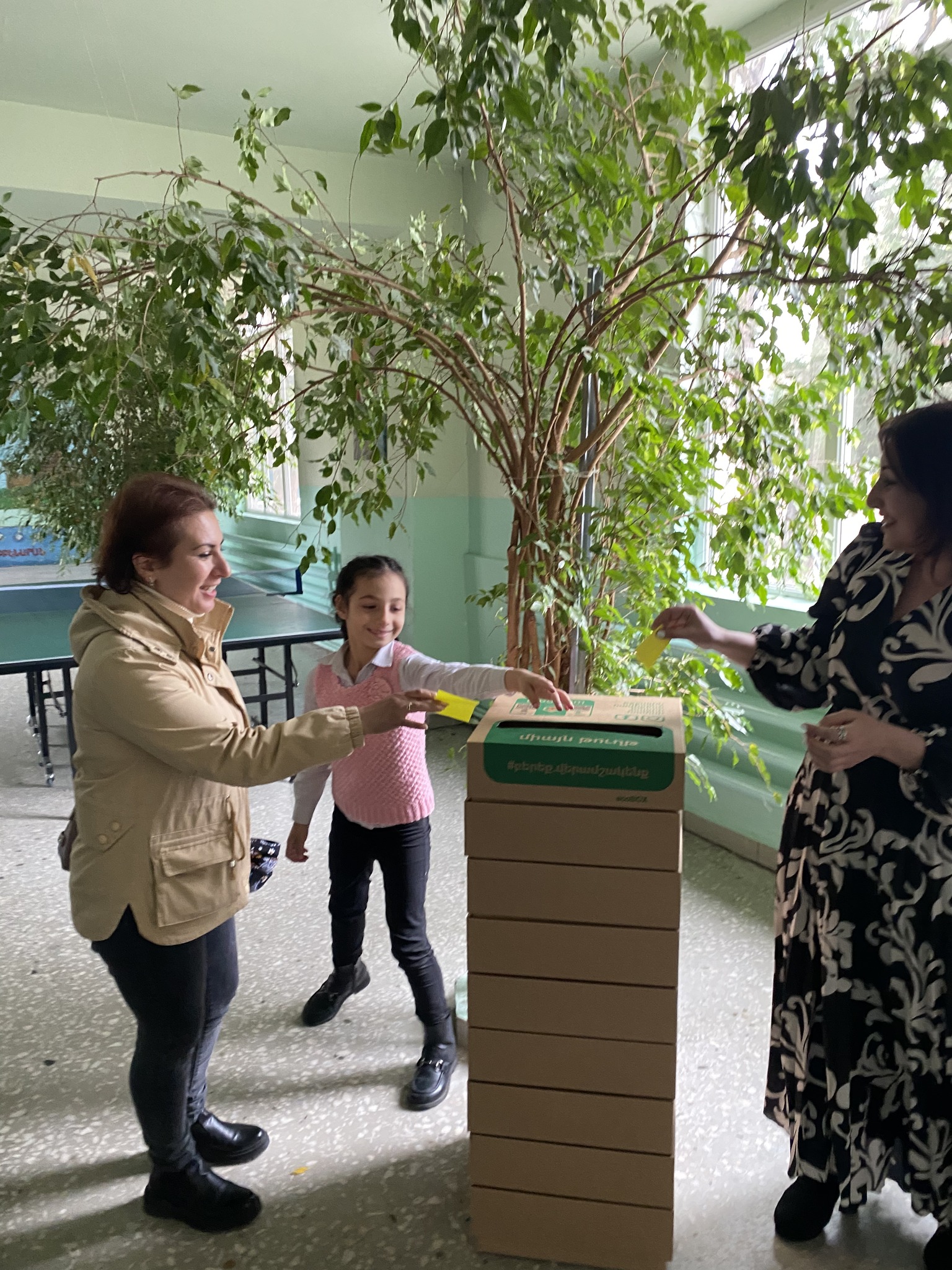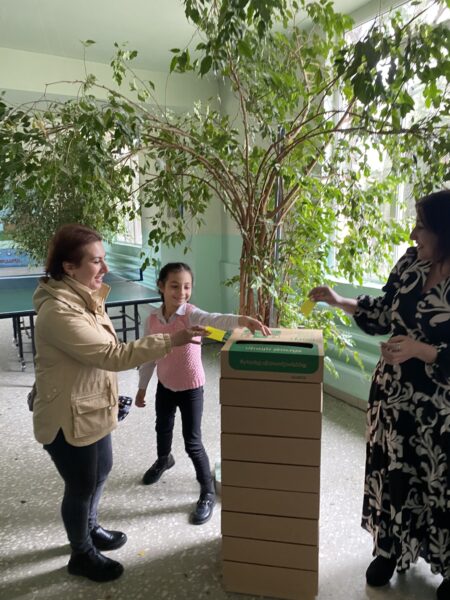

Three young women from Armenia—Hermine Martirosyan, Taguhi Sargsyan (Norabats), and Anna Galstyan (Nizami)—have demonstrated how local leadership and education can drive sustainable development. Through the ArmeniaCorps initiative, they transformed a shared concern into a community-led solution: the “Effective Use of Waste in the Educational System” project.
By building on their existing community knowledge and developing new skills in project planning and fundraising, the trio successfully designed an initiative to integrate waste management practices in the schools of Norabats, Nizami, and Darbnik villages. Their objective was clear: promote environmental awareness, nurture civic responsibility, and introduce sustainable practices into the education system.
Their efforts were rewarded with a grant from the ArmeniaCorps pitching competition. As a result, over 250 students from local schools have received hands-on environmental education. The project partnered with a paper recycling company to install waste collection bins—a visible and functional step toward behavior change.
The project’s impact quickly became tangible. In one symbolic moment, a student paused to use a paper bin mid-photo, interrupting Anna and Hermine’s snapshot. That simple action reflected a deeper truth: sustainable behavior had taken root.
This initiative contributes directly to the Sustainable Development Goals, particularly SDG 4: Quality Education, SDG 11: Sustainable Cities and Communities, SDG 12: Responsible Consumption and Production and SDG 13: Climate Action․
It also exemplifies the Asset-Based Community Development (ABCD) approach—recognizing and mobilizing local people, knowledge, and partnerships to lead transformation from within.
The “Effective Use of Waste in the Educational System” project was developed and funded within the framework of the ArmeniaCorps Development Initiative with funding from the US Department of State Public Diplomacy Section and support from the Masis Community, Ararat Region.
